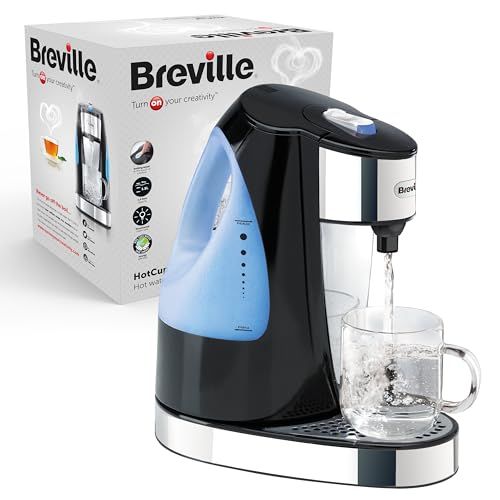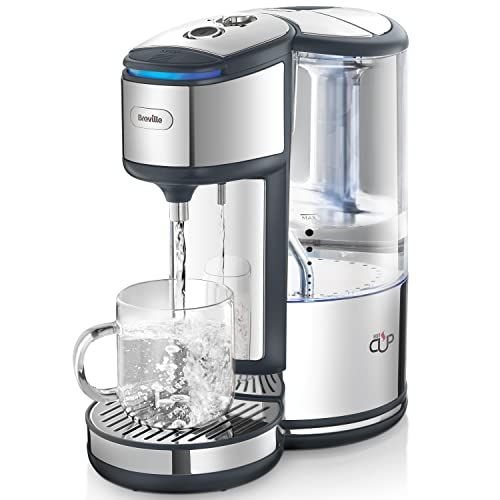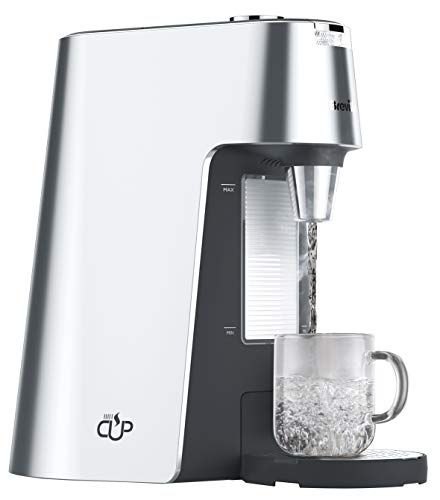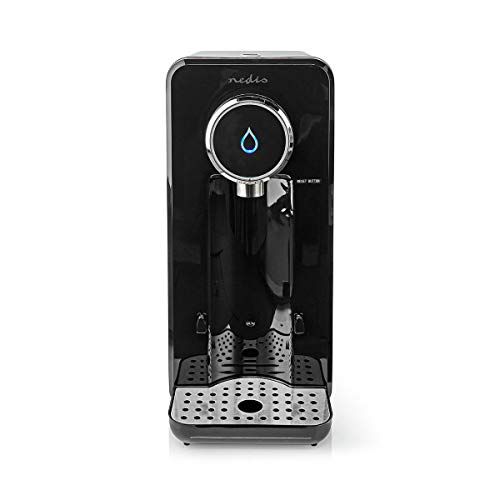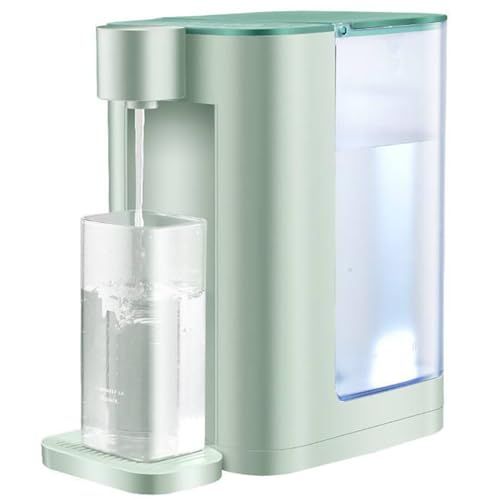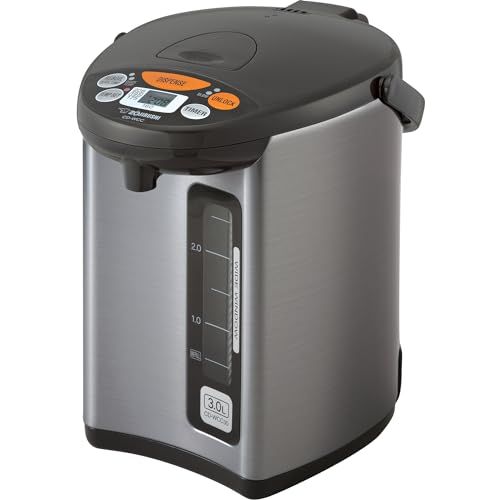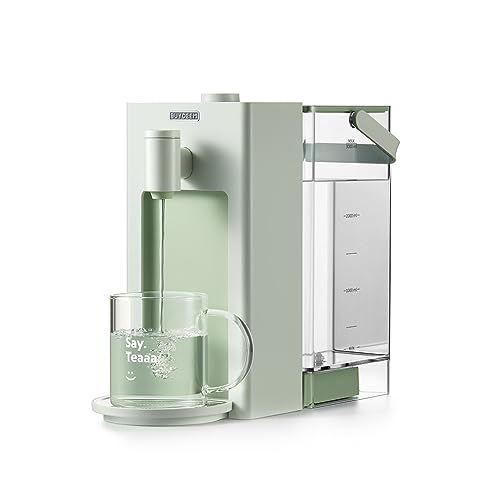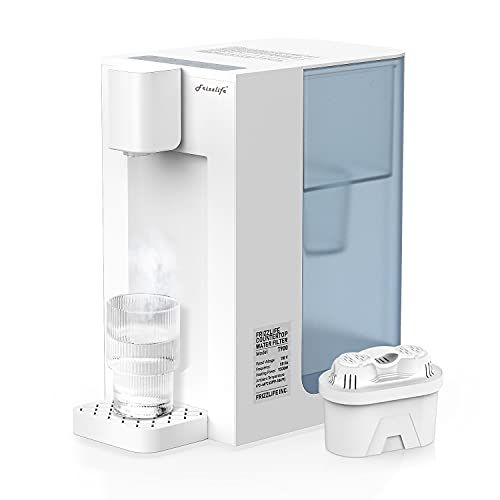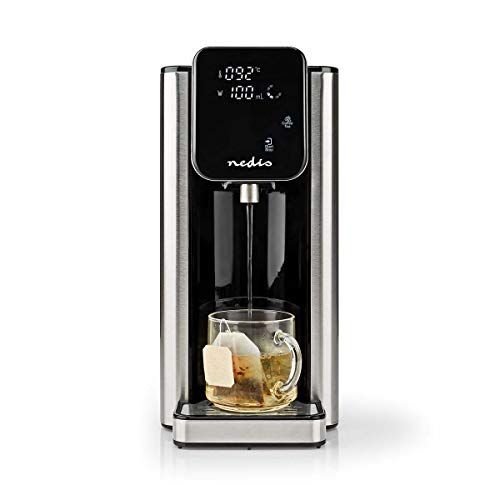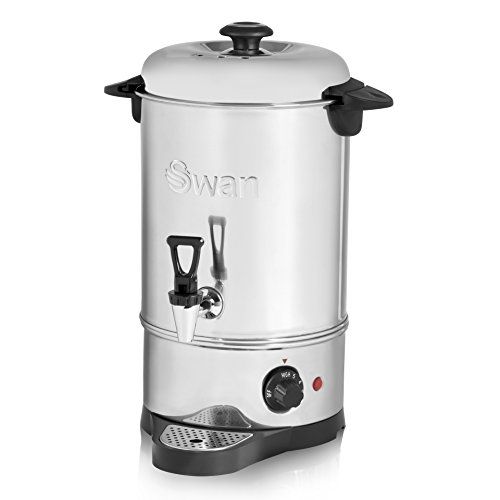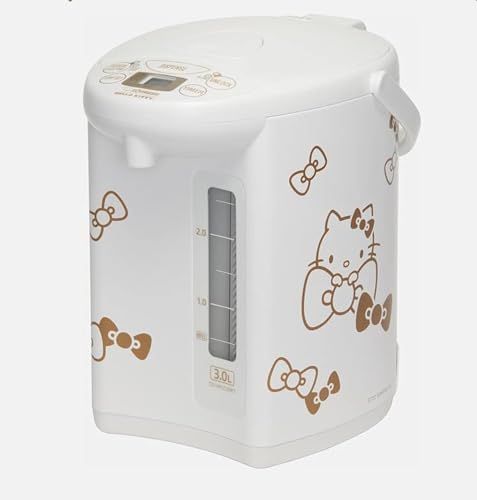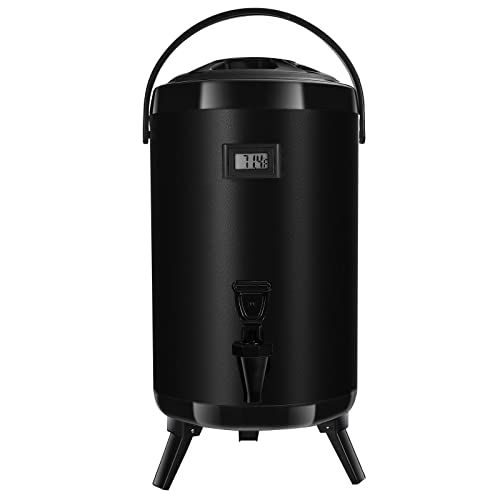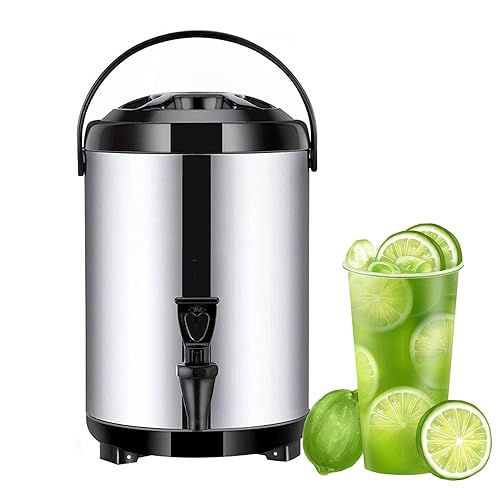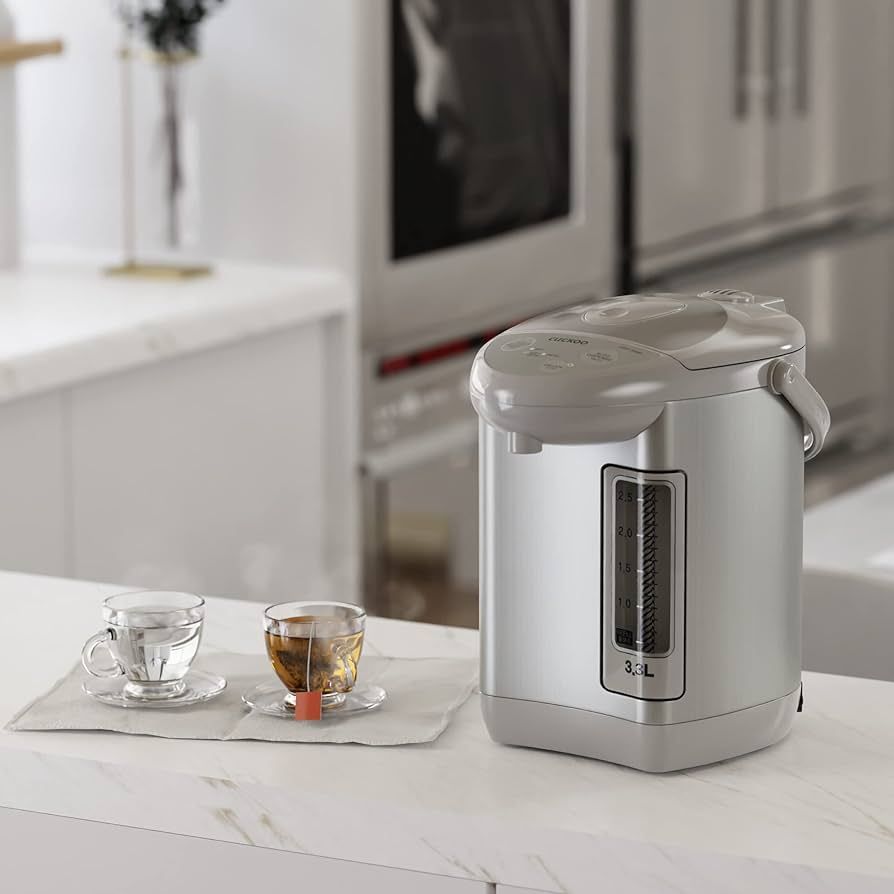
Hot water dispensers, also known as hot water urns or boilers, provide instant hot water on demand in homes and offices. They are countertop appliances connected to the water supply that heat and store water at a preset temperature. Hot water dispensers have risen in popularity due to the convenience of having hot water available anytime without waiting for a kettle to boil.
The main purpose of a hot water dispenser is to provide hot water for making tea, coffee, instant meals, and other hot beverages. They eliminate the need to boil water every time you need it. Hot water dispensers keep water hot so it's ready when you need it, saving time and energy. Many people find it more convenient to get hot water from a dispenser than waiting for an electric kettle. Dispensers also allow dispensing water at different temperatures for different needs. Having instant hot water can make homes and offices more productive and efficient.
Types of Hot Water Dispensers
There are several main types of hot water dispensers to choose from:
Countertop Dispensers
Countertop hot water dispensers, as the name suggests, sit directly on your kitchen counter or tabletop. These dispensers tend to be more compact and lightweight. They have a water tank that you manually fill, making them self-contained units. Countertop models come in a range of tank sizes, from around 1-2 liters up to 10 liters. They are easy to set up and use.
Freestanding Floor Units
Freestanding floor unit hot water dispensers sit on the floor, often on small casters for easy mobility. They tend to feature larger water tanks, like 18-40+ liters. The floor units can produce a high volume of hot water for households or offices. Many feature digital controls and a child safety lock. These dispensers have a larger footprint but provide more hot water capacity.
Under Sink Dispensers
Under sink hot water dispensers install below the sink, helping save counter space in a compact kitchen. They connect directly to the water supply line and provide instant hot water on demand. Under sink dispensers heat the water as it flows through the system, so there is no water tank. This type requires plumbing installation but provides unlimited hot water.
Plumbed-In vs. Self-Contained
Plumbed-in hot water dispensers connect directly to the water supply line and don't require refilling a tank. Self-contained dispensers have an internal tank that you fill manually with a jug or bottles. Plumbed-in models provide unlimited capacity but require installation. Self-contained units offer portability and easier setup but limited capacity before refilling.
Key Features to Look for in a Hot Water Dispenser
When shopping for a hot water dispenser, there are several key features to consider:
Tank Capacity - Hot water dispensers come with tank capacities ranging from 2-5 liters. The larger the tank capacity, the more hot water is available before needing to reheat. For home use, a 3-5 liter tank is sufficient. For office use, look for 5 liters or more.
Heating Element Wattage - The wattage of the heating element affects how quickly the water can reheat after dispensing. Most heat water to around 90-95°C. Look for heating elements between 800-1500W for the best reheat times.
Dispensing Speed - Dispensing speed determines how fast hot water flows from the tap. Faster flow rates allow you to fill cups and pots more quickly. Look for dispensers with flow rates of at least 2 liters per minute.
Safety Features - Key safety features include child locks to prevent accidental dispensing, auto shut-off when the reservoir is empty, and cool touch exterior to prevent burns. Ensure any model has multiple safety mechanisms.
Filtration - Some dispensers feature built-in water filtration to improve taste and prevent scale buildup. Filtration is recommended if water quality is poor, but not necessary otherwise. Replace filters every 6 months.
Choosing a dispenser with an adequate tank size, fast heating element, quick dispensing speed, safety features, and filtration (if needed) will provide the best performance and safety.
Benefits of Having a Hot Water Dispenser
Having a hot water dispenser in your home or office provides a number of benefits that can make life easier and more convenient. Here are some of the key advantages of owning a hot water dispenser:
Convenience of Instant Hot Water - Rather than having to boil water in a kettle or pot, a hot water dispenser provides instant access to steaming hot water on demand. This can save a significant amount of time when making tea, coffee, instant foods, or anything else that requires hot water. The convenience factor is a major reason many people choose to install a hot water dispenser.
Energy Efficiency - Most hot water dispensers are very energy efficient, especially insulated dispenser models which help keep the water hot without needing constant reheating. Some dispensers have different temperature settings allowing you to lower the temperature when hot water is not needed as often. This can lead to lower energy bills compared to other methods of heating water like an electric kettle.
Precise Temperature Control - Dispensers allow you to customize the exact temperature of the water with settings ranging from around 160-212°F. This level of precision makes it easy to achieve the optimal temperature for different uses like tea, coffee, cocoa, instant foods, etc.
Space Saving - Since hot water dispensers provide hot water instantly, you avoid having to use up counter space for an electric kettle. Dispensers are also available in compact sizes that can sit neatly on a counter or be mounted on a wall to maximize space.
Safety - Hot water dispensers often have safety features like child locks, auto shut-off, and cool touch exterior to help prevent burns and injuries. The water is heated internally rather than in an exposed kettle, which reduces the risks of getting burned by steam or spills. Dispensers keep the boiling water safely enclosed.
Having instant access to hot water along with the other benefits makes a hot water dispenser an ideal addition to any home or office. The convenience and efficiency help make everyday tasks easier.
Using a Hot Water Dispenser
Using a hot water dispenser allows you to quickly access hot water on demand for making tea, coffee, oatmeal and more. Here are some tips for getting the most out of your hot water dispenser:
Ideal Serving Temperature
The ideal temperature for hot water is between 195-205°F (90-96°C). This allows for proper extraction when brewing tea or coffee.
Look for models with temperature controls so you can adjust to your preferred setting.
Let the water run for 30 seconds before filling your cup to allow the water to fully heat up.
Dispensing Hot Water Safely
Use caution when dispensing hot water as it can cause burns.
Keep children away from the dispenser to avoid accidents.
Allow the water to cool slightly before consuming, especially when making hot drinks for kids.
Cleaning and Maintaining the Dispenser
Clean the dispenser nozzle and drip tray regularly to prevent buildup.
Descale the tank every 3-6 months using vinegar or a descaling solution.
Replace filters as needed per the manufacturer's recommendations.
Wipe down exterior surfaces with a soft, damp cloth. Avoid abrasive cleaners.
Follow all maintenance guidelines in the owner's manual.
Properly caring for your hot water dispenser will help keep it working efficiently for years to come. Be sure to use it safely and at an optimal temperature for all your hot beverage needs.
Energy Efficient Models
When choosing a hot water dispenser, it's important to consider energy efficiency. An energy efficient model can help save on electricity costs over time. Here are some key features to look for:
High Efficiency Heating Elements: Many modern hot water dispensers use more advanced heating elements that heat water faster and more efficiently. Look for mentions of "high efficiency" or "rapid heating" elements.
Insulated Tanks: The hot water tank should be well insulated to retain heat and minimize standby heat losses. 2-3 inches of foam insulation is ideal. Some models even have vacuum-insulated tanks for maximum efficiency.
Energy Saving Modes: Dispensers with energy saving modes will switch to a low-power standby mode after a period of inactivity. This prevents constantly heating when not in use.
Cost Savings: Overall, an energy efficient hot water dispenser can save up to 30% on electricity costs compared to a standard model. This saves money in the long run by reducing energy waste during heating and standby. The higher upfront cost of energy efficient models is usually recouped over 3-5 years of average use.
So for long term savings on your electricity bill, it's advisable to invest in a well-insulated dispenser with high efficiency heating and energy saving modes. The cost savings and environmental benefits are well worth it.
Safety Tips
When using a hot water dispenser, following some basic safety tips can help prevent accidents and injuries:
Keep the power cord and tubing neatly organized and out of high traffic areas. Tripping hazards can cause burns or serious falls. Secure cords and tubing neatly against the wall or underneath cabinets.
Avoid overfilling the water reservoir. Water overflow can lead to messes, scalds, or electrical hazards. Follow the manufacturer's fill line recommendations.
Periodically check dispenser hoses and connections for leaks. Dripping water near electrical components can be extremely dangerous. Turn off the unit and have a technician repair any leaks.
Always unplug the hot water dispenser before cleaning. Never immerse the base unit in water or use excess liquids that could reach the internal electrical parts. Wipe down with a damp cloth instead.
Allow dispensed water to cool slightly before consuming, as water directly from the spigot can be extremely hot.
Keep small children away from hot water dispensers to avoid accidental scalding.
Place dispensers out of reach of children to prevent tampering with faucets or water reservoir.
Following basic precautions and maintenance can help ensure safe operation of hot water dispensers in homes or offices. Paying attention to leaks, cords, placement, and cleaning will help reduce risks.
Installation
Installing a hot water dispenser is a relatively straightforward process, but there are some key considerations depending on the type of unit you choose.
Countertop vs Under Counter
Countertop hot water dispensers simply need to be placed on a counter or table near an electrical outlet. They come fully self-contained and don't require any plumbing or ventilation.
Under counter hot water dispensers need to be installed in a base cabinet, requiring some minor cabinet modifications. The cabinet will need an opening made in the back or bottom for water line access, and potentially an opening in the top or side for the dispensing spout. Under counter units will also need proper ventilation.
Plumbing Requirements
For under counter hot water dispensers, a nearby cold water line will need to be tapped and connected to the unit using the provided tubing and fittings. A shut-off valve should be installed to easily turn off water to the dispenser. The system needs to be properly pressurized for the dispenser to function.
Electrical Setup
All hot water dispensers simply need to be plugged into a nearby 120V grounded electrical outlet. Be sure the outlet is properly GFCI protected. Pay attention to the dispenser's power cord length to make sure it will reach the outlet.
Ventilation
Under counter hot water dispensers produce heat and moisture, so proper ventilation is important. The cabinet space should have vents cut near the bottom to allow cool air intake, and additional vents near the top to allow warm moist air to escape. This airflow prevents condensation buildup and overheating.
With proper setup, a hot water dispenser can provide instant hot water for beverages, cooking, and more for many years. Pay attention to installation requirements based on the type of unit chosen.
Maintenance
Proper maintenance is crucial to keep your hot water dispenser running efficiently and safely. Here are some key maintenance tips:
Descaling - Over time, mineral deposits from hard water can build up and clog components like heating elements and tubing. Descaling involves using a descaling solution or white vinegar to dissolve these deposits. Follow the manufacturer's instructions, but generally you'll fill the tank with the descaling agent and let it soak before flushing thoroughly. Descale every 3-6 months depending on water hardness.
Cleaning the Tank - Sanitize and clean the inner tank 2-4 times per year. Turn off power, drain the tank fully, then use a non-abrasive sponge and mild detergent to wipe down the inner surfaces. Rinse thoroughly before refilling. This prevents microbial growth.
Filter Changes - If your dispenser has a water filter, replace it per the manufacturer's timeline, usually every 3-6 months. This keeps water free of sediment and impurities. Make sure to use compatible replacement filters.
Inspecting Parts - Check components like faucets, spouts and tubing for cracks or leaks. Examine heating elements for mineral buildup. Replace worn or damaged parts promptly. Tighten fittings if needed. This prevents leaks and other malfunctions.
Routine maintenance keeps hot water dispensers performing their best and avoids breakdowns or unsafe conditions. Refer to the owner's manual for model-specific steps. Proper care maximizes longevity.
Top Hot Water Dispenser Brands
When shopping for a hot water dispenser, it's a good idea to look at some of the top brands in the market. Here are five reputable hot water dispenser manufacturers to consider:
Breville
Breville is a leading brand known for its innovative kitchen appliances. Its hot water dispensers feature a high power output for fast boiling along with adjustable temperature settings. Popular Breville hot water dispenser models include the VKJ142 and VKJ367.
InSinkErator
InSinkErator specializes in instant hot water dispensers and filtration systems. Their hot water dispensers provide steaming hot water while also filtering out impurities. They offer dispensers in stylish designs with touchscreen controls. The InSinkErator F-H3300 is a top choice.
Avalon
Avalon produces premium hot water dispensers focused on safety and efficiency. Their dispensers have child safety locks, auto shut-off features, and energy saving modes. Top Avalon models are the A5 Self Cleaning and A12 Countertop Self Cleaning dispensers.
Hamilton Beach
Hamilton Beach is a leading small appliance brand in the US known for affordability. Their hot water dispensers provide convenience features like adjustable temperature settings and auto shut-off at a budget-friendly price point. Consider the Hamilton Beach 40515 and 40865 models.
VonShef
VonShef offers contemporary designed hot water dispensers packed with features. Their dispensers provide instant boiling water while taking up minimal counter space. Top options are the VonShef Instant 4 Litre Hot Water Dispenser and the VonShef Instant Hot Water Dispenser.
When selecting a hot water dispenser, consider your needs in terms of capacity, temperature settings, safety features, and design. Comparing the top brands and models is a great way to find the right fit.
Hot Water Dispensers comparison
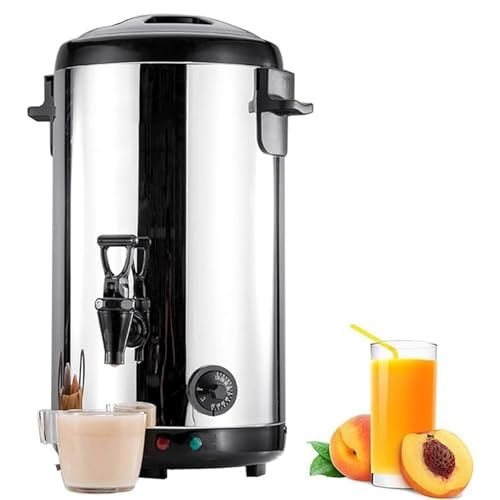 | 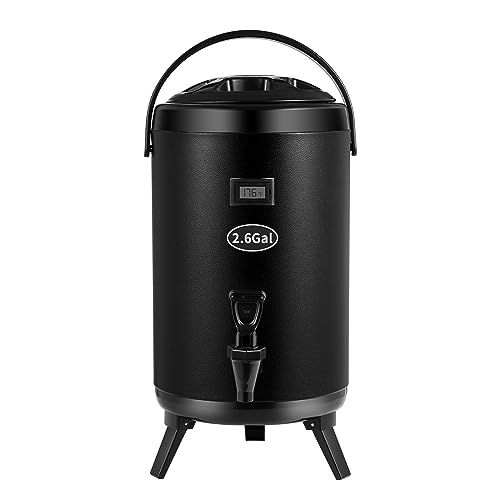 | 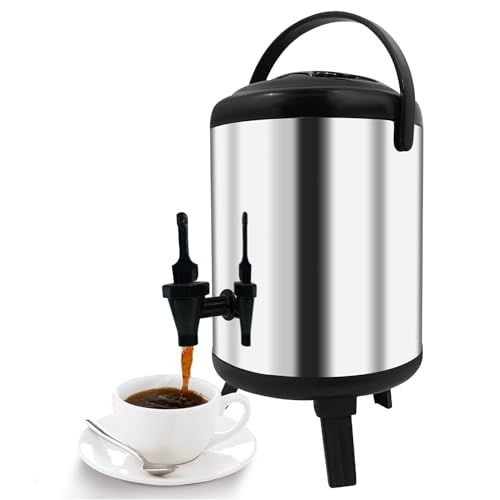 | 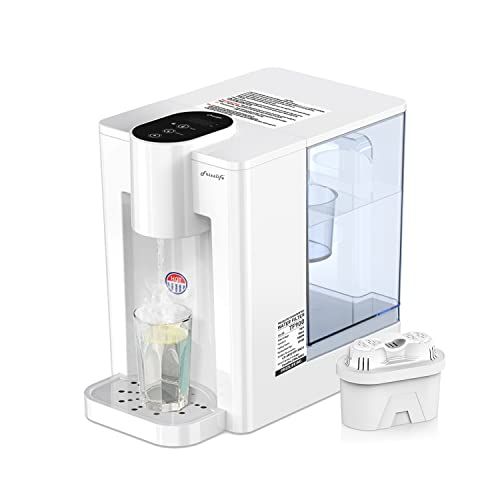 | 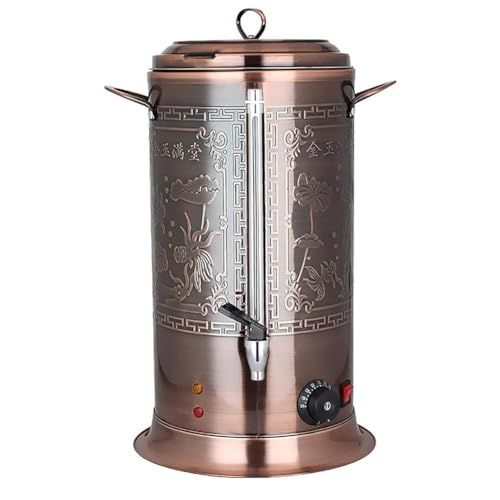 | |
|---|---|---|---|---|---|
| Model | DRUXTO cXk6Ad7Wb-12L | AGKTER 304QNCTH10B | CHOLISM 8LMTB | FRIZZLIFE TF900 | HYQNG 0m0gkjUke-40L |
| Brand | DRUXTO | AGKTER | CHOLISM | - | HYQNG |
| Item Weight | - | 2.86 kg | 2.08 kg | 2.66 kg | - |
| Model Number | cXk6Ad7Wb-12L-silver | 304QNCTH10B | 8LMTB | - | 0m0gkjUke-40L |
| Product Dimensions | - | 24.13 x 24.13 x 41.91 cm; 2.86 kg | - | 17.78 x 24.13 x 26.16 cm; 2.66 kg | - |
| Special Features | Portable, Temperature Control | - | - | - | - |
| Special Feature | Portable, Temperature Control | - | - | - | - |
| Price | - | £115.46 | £76.31 | £204.04 | £429.75 |
FAQ
What are hot water dispensers?
Hot water dispensers are countertop or freestanding appliances that heat water and store it in a tank so it's ready to dispense on demand. They provide instant access to hot water for making tea, coffee, oatmeal, or other hot beverages and foods.
What are the benefits of a hot water dispenser?
The main benefits are convenience, energy efficiency, and precise temperature control. You don't have to wait for water to boil each time. Dispensers only heat the water being used, avoiding energy waste from boiling more than needed. Many models allow adjusting the temperature.
How do hot water dispensers work?
They have an internal water reservoir that connects to the water supply. Cold water enters and is heated by an internal electric heating element. A thermostat controls the temperature. When the tap is pressed, hot water flows out of the faucet. Tanks range from 1-10 liters.
What temperatures do they heat water to?
Most models reach temperatures between 175-195°F (79-90°C). Some have preset temps while others allow custom temperature selection. Temperatures around 180-185°F are optimal for hot drinks.
Where are hot water dispensers commonly used?
They're popular in home kitchens, offices, waiting rooms, break rooms, shops, clinics, and other settings where people want on-demand hot water access. Commercial-grade dispensers are used in high-traffic areas.
Do they require plumbing?
Countertop models don't require plumbing. They have a water tank that's filled manually. Freestanding/undercounter dispensers connect to the water supply via a 1/4 inch water line.
What types of hot water dispensers are available?
Countertop, freestanding, undercounter, and commercial dispensers. Countertop is most common for home use. Freestanding and undercounter connect to plumbing. Commercial dispensers have larger capacities for offices/public use.
What should I look for when choosing one?
Tank capacity, temperature settings, fast water heating, easy controls, safety features like auto shut-off, energy efficiency ratings, dispenser height/reach, warranty, brand reputation, and cost.
What kind of maintenance do they need?
It's important to periodically flush the tank and replace filters as directed. Wipe exterior surfaces with a damp cloth to keep clean. Descaling may be needed in areas with hard water.
How much do hot water dispensers cost?
Basic countertop models range from £50-150. Mid-range and advanced models with more features and capacity range from £150-500. Commercial dispensers start around £400.
